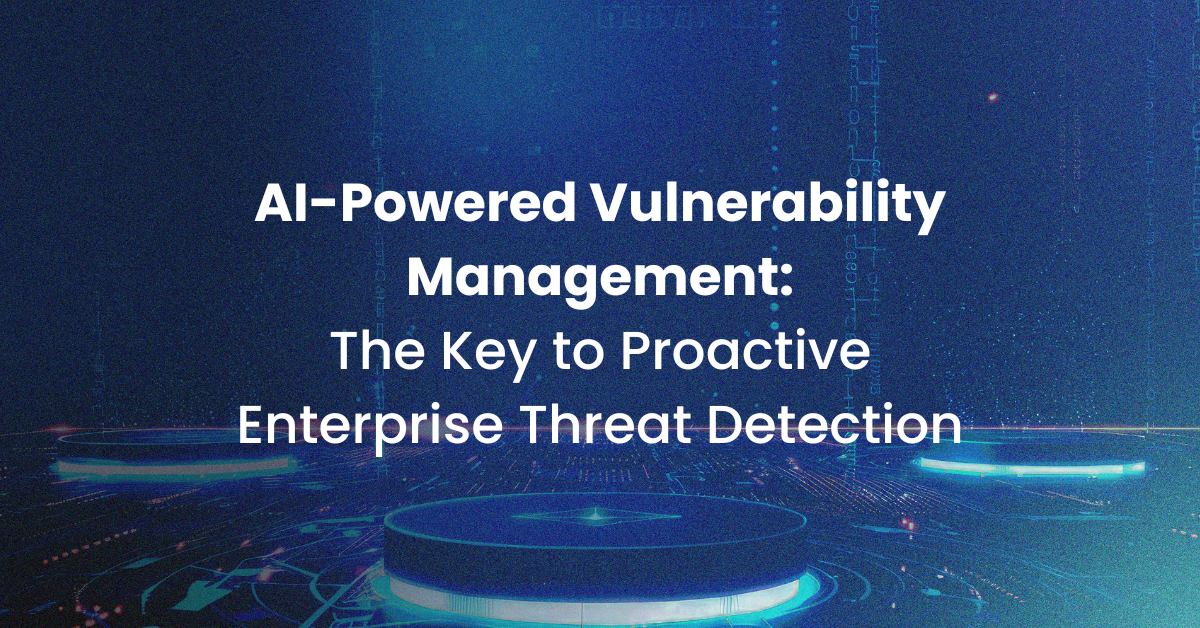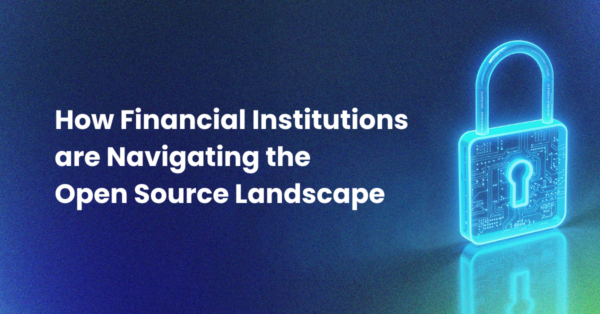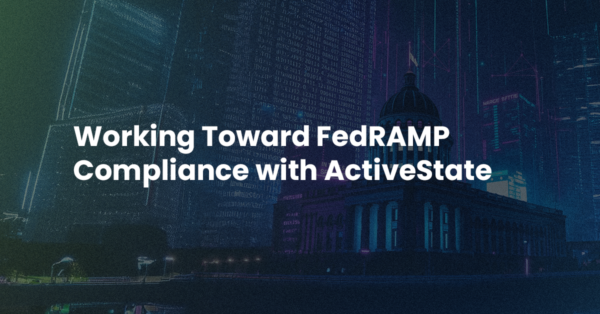AI is no longer a novelty. Nearly all of the tools modern enterprise software teams rely on, from project management and code intelligence to security and DevOps platforms, have some AI-powered features. Security leaders interested in improving cybersecurity and implementing application security posture management (ASPM) solutions have a lot to gain from leveraging AI within their team’s software development lifecycle.
Many of the vulnerability management challenges DevSecOps teams face, including the growing number of vulnerabilities and the last mile problem of moving from identification to action, can be minimized or even completely eliminated by leveraging AI within vulnerability management.
AI and vulnerability management are a power couple when used within the application security posture management framework. The ASPM framework has three pillars: detect, prioritize, and remediate vulnerabilities. AI can support at every step by saving time, improving accuracy, and supporting speedy fixes.
In this article, we’ll explore how AI in cybersecurity could reshape your entire approach to enterprise vulnerability management.
Why traditional vulnerability management is no longer the answer
If it feels like your team is on an endless hamster wheel of identifying vulnerabilities, doing the painstaking process of trying to figure out which to prioritize, and then remediating, you’re not alone. On average, it takes teams 4.5 months to remediate critical vulnerabilities.
Organizations are under increasing pressure to innovate and ship code fast. According to our 2025 State of Vulnerability Management report, 34% of respondents struggle to balance speed to deployment with security controls.
So, why despite the industry’s best efforts is it taking so long to remediate?
- As cloud-native and open source environments become the cornerstone of how we build software, the attack surface increases, presenting an increasing number of risks.
- Manually detecting and mitigating vulnerabilities is inefficient and prevents teams from having the time to take a proactive approach.
- Risk prioritization is hard. Point blank. Teams do their best to determine which vulnerabilities are most critical, but resources are still wasted on fixing low-impact threats.
So, what do you do about it? While AI isn’t a silver bullet, it’s pretty powerful.
What is AI-powered vulnerability management?
Using AI to support vulnerability management and remediation involves securing applications by mobilizing AI capabilities, like machine learning and generative AI, to streamline the detection, prioritization, and remediation of vulnerabilities.
How does using AI differ from traditional vulnerability management?
Traditional vulnerability management is plagued by manual processes, guess-driven risk prioritization, and slow remediation. Using AI is the antithesis. Using AI in cybersecurity allows teams to streamline each of these steps, enhancing speed, improving accuracy, and supporting better data-driven decision making.
Here’s how AI can support within each pillar of ASPM solutions:
- Detect: AI tools learn to accurately identify and detect anomalies, vulnerabilities, and attacks in real-time based on a wealth of historic data, while also assessing your vulnerability blast radius and potential for breaking changes. This helps your DevOps and security teams focus on other important tasks knowing issues will be detected.
- Prioritize: AI features address risks intelligently while minimizing impact on first-party code and helping you make informed decisions that balance risk mitigation with resource allocation.
- Remediation: AI-driven workflows integrate with your CI/CD cycle and can help you proactively remediate issues, so you can fix vulnerabilities faster.
5 ways AI can improve how your team tackles enterprise vulnerability management
Wondering what impact AI-powered vulnerability management could have within your organization? Here are five key examples of benefits for DevSecOps teams.
1. Automated and intelligent AI vulnerability detection
AI vulnerability detection works in real time. For example, machine learning tools learn from comprehensive data sets to accurately identify deviations from unexpected behavior, suspicious login attempts, or file access patterns that aren’t quite right. How can generative AI be used in cybersecurity? GenAI tools may simulate attack scenarios to identify gaps in security and create a proper risk assessment.
An AI-driven vulnerability management platform does this while your team is doing anything and everything else – sprint planning, sleeping, innovating, coding – you name it.
Our comprehensive intelligent remediation platform, ActiveState, leverages 20+ years of open source intelligence combined with AI-driven features like runtime monitoring, comprehensive usage tracking, and crowdsourced insights that capture vulnerabilities in real time across all environments to help you stay ahead of emerging threats.
2. Enhanced risk prioritization
Risk prioritization is one of the most challenging parts of ASPM for teams. What is risk prioritization and how can AI help? AI assesses vulnerabilities based on:
- Exploitability: How easy would it be for attackers to identify and exploit this vulnerability?
- Asset criticality: How important is this asset? What would the cascading impact be if it was exploited?
- Real-time threat intelligence: What new threats have popped up? What is the most significant threat at this given moment?
Many teams spend days working on the wrong vulnerabilities first. ActiveState’s Risk Prioritization Copilot can help ensure your team is working through the highest-risk threats first, making the most of your budget and time.
3. Proactive threat modeling and simulation
What if your team could understand and anticipate how potential attacks may play out before they happen?
AI-powered threat modeling could make all the difference to your application’s security considering over 50% of vulnerabilities are exploited within 7 days of discovery. By simulating real-world attack scenarios and predicting potential exploits in application code, your team can detect vulnerabilities before they can be exploited.
Taking a proactive, predictive approach helps DevOps teams know where to implement preemptive fixes, reducing risk and strengthening the security of enterprise applications in an era where threats are increasingly sophisticated.
4. Continuous compliance monitoring
As your breadth of code grows, keeping a tight handle on compliance becomes more difficult. AI can help security professionals automatically maintain strict compliance standards in line with evolving regulations by checking security configurations and access controls against industry standards.
Not only does this reduce organizational risk of attacks, it also mitigates the risk of brand-compromising compliance failures and expensive regulatory penalties.
5. Adaptive learning and threat intelligence integration
Manually researching potential vulnerabilities that leave your application open to attacks is extremely time consuming for developers. Instead, AI-driven monitoring can provide real-time updates to detection and mitigation strategies based on new threat intelligence, helping you stay ahead of attacks and giving your team more time to work through critical fixes or innovate.
Looking ahead with AI-powered vulnerability management
AI is redefining vulnerability management by automating detection, improving risk prioritization, and empowering teams to take proactive security measures. With heightened pressures to innovate and ship code faster than ever before, getting back countless hours that used to be spent on manual research, prioritization, and remediation is game-changing for development teams.
As threats grow in complexity and volume, traditional security approaches are simply no longer sufficient. Manual processes can no longer keep up with the scale of risks presented by cloud-native environments, open-source dependencies, and rapid development cycles. This is our new reality.
For CISOs and DevOps engineers, turning to AI-driven solutions is crucial for enhancing security posture and reducing the attack surface. By simulating attack scenarios, predicting potential exploits, and automating remediation, teams can identify and resolve the most impactful vulnerabilities faster.
ActiveState’s Risk Prioritization co-pilot can help your team make smarter decisions, faster. ActiveState robust AI-powered vulnerability management features will empower your team to balance risk mitigation with resource allocation, without compromising speed or agility.






